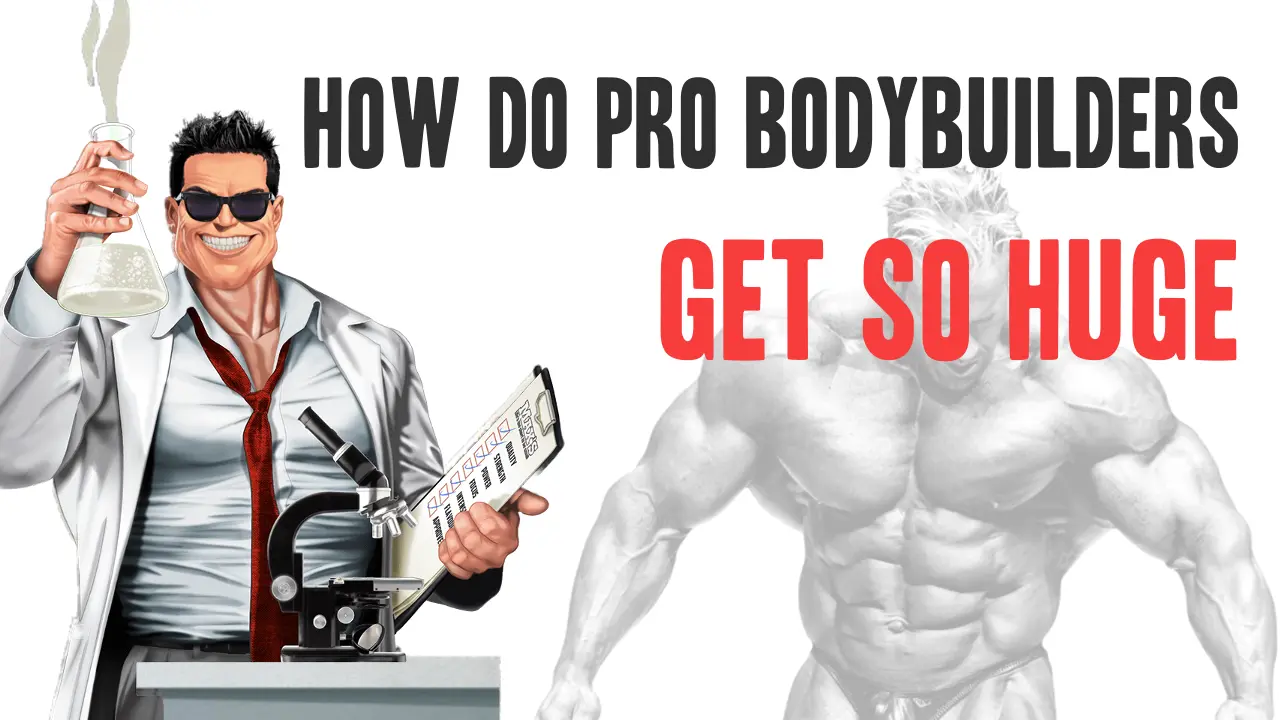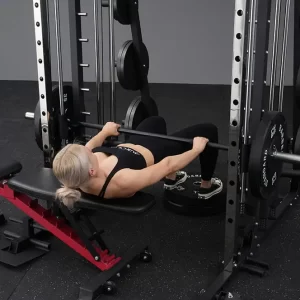Contents
If you’ve ever seen professional bodybuilders, you’ve likely been astounded by their massive, sculpted physiques. But how exactly do they get so huge? It’s not just about lifting weights; there’s a lot more science and strategy behind their incredible size. In this post, we’ll dive deep into the techniques, diet, and recovery strategies pro bodybuilders use to build extreme muscle mass.
1. Progressive Overload
One of the most fundamental principles in bodybuilding is progressive overload. This technique involves gradually increasing the weight, reps, or intensity of exercises over time. When muscles are consistently challenged, they adapt by growing larger and stronger.
How it works: Pro bodybuilders constantly push themselves to lift heavier weights or do more reps than they previously could. This creates microscopic tears in the muscle fibers, which the body repairs, resulting in bigger muscles.
2. High-Volume Training
Bodybuilders use high-volume training to keep muscles under tension for longer periods. This typically involves performing multiple sets and reps, sometimes 4-5 sets of 8-12 reps or more, depending on the phase of their training.
Why it’s effective: High volume leads to significant muscle fatigue and micro-damage, which triggers hypertrophy (muscle growth). Pro bodybuilders also incorporate techniques like supersets, drop sets, and giant sets to maximize the time under tension and intensify their workouts.
3. Muscle Isolation
While heavy compound lifts are crucial (we’ll get to that), bodybuilders also focus on muscle isolation exercises to target specific areas. Exercises like bicep curls or leg extensions hone in on individual muscles, ensuring that each part of the body develops symmetrically.
Key benefit: Muscle isolation helps bodybuilders fine-tune their physiques, addressing weaker areas or lagging muscle groups to create the balanced, proportioned look required in competition.
4. Strategic Training Splits
Pro bodybuilders often divide their training into splits, where they work on different muscle groups on different days. Popular splits include:
- Push/Pull/Legs: Training pushing muscles (chest, shoulders, triceps), pulling muscles (back, biceps), and legs on separate days.
- Bro Split: Focusing on one muscle group per day, e.g., chest on Monday, back on Tuesday, etc.
The advantage: This approach allows bodybuilders to focus intensely on each muscle group while giving other muscles time to recover. It also ensures that all parts of the body are trained thoroughly and with adequate volume.
If you’re new to bodybuilding, want to see quick results, and are ready to push yourself to the limit, this 6-month bodybuilding program is perfect for you.
5. Heavy Compound Lifts
No bodybuilding program would be complete without heavy compound lifts like squats, deadlifts, and bench presses. These exercises engage multiple muscle groups, stimulate overall growth, and increase the body’s release of anabolic hormones like testosterone and growth hormone.
Why bodybuilders love them: Compound lifts are efficient, build functional strength, and lay the foundation for mass. Engaging large muscle groups promotes greater overall development.
6. Caloric Surplus and Precision Nutrition
Building massive muscle requires a caloric surplus, meaning bodybuilders consume more calories than they burn. However, it’s not just about eating more—macronutrient balance is critical.
- Protein: Essential for muscle repair and growth.
- Carbohydrates: Provide the energy needed for intense training.
- Fats: Support hormone production and overall health.
Pro bodybuilders also eat frequent meals throughout the day (5-6 times), ensuring their bodies have a constant supply of nutrients. Meal timing is key, especially around workouts, where carbohydrates and protein are prioritized to optimize recovery and muscle repair.
7. Supplements
While real foods are the foundation of a bodybuilder’s diet, they often use supplements to enhance their results. Let’s take a deeper look at the supplements that professional bodybuilders often rely on and how they help maximize results.
- Protein powders: Protein powders are a staple in bodybuilding because they offer a quick, convenient, and high-quality source of protein, especially useful post-workout when muscles need amino acids to start the repair and recovery process.
- Creatine: Creatine is one of the most researched and effective supplements for increasing muscle size, strength, and power output. Found naturally in small amounts in red meat and fish, creatine phosphate is stored in muscles and used as a quick energy source during high-intensity, short-duration activities like heavy lifting.
- Branched-Chain Amino Acids (BCAAs): Branched-chain amino acids (BCAAs) include three essential amino acids—leucine, isoleucine, and valine—that are directly involved in muscle protein synthesis and energy production. They’re often consumed during training to help maintain muscle mass and reduce muscle breakdown during intense workouts.
Pre-workouts:
Pre-workout supplements are formulated to enhance performance, focus, and endurance, enabling bodybuilders to train with greater intensity and push past fatigue. They typically contain a combination of ingredients that support energy, mental clarity, and blood flow.
- Caffeine: A powerful stimulant, caffeine increases alertness, endurance, and overall workout performance. Many pre-workouts contain anywhere from 150-400 mg of caffeine per serving.
- Beta-Alanine: This amino acid helps buffer lactic acid buildup, reducing muscle fatigue and allowing for more reps and prolonged sets.
- Nitric Oxide (NO) Boosters: Compounds like L-citrulline and arginine promote vasodilation (widening of blood vessels), improving blood flow to muscles and delivering more oxygen and nutrients, creating the much-sought “pump.”
- Adaptogens: Ingredients like ashwagandha and Rhodiola Rosea, which help manage stress and maintain energy levels throughout a workout.
Anabolic Steroids and Performance-Enhancing Drugs (PEDs):
While legal supplements can greatly support muscle growth and recovery, some professional bodybuilders choose to use anabolic steroids or other PEDs to gain a competitive edge in size, strength, and recovery. It’s important to note that these substances are generally illegal, come with significant health risks, and are not recommended for recreational or amateur lifters.
Types of PEDs Commonly Used:
- Anabolic Steroids: Synthetic derivatives of testosterone that promote increased muscle mass and strength. Commonly used steroids include Dianabol, Trenbolone, and Testosterone Enanthate.
- Human Growth Hormone (HGH): Promotes muscle growth, cell repair, and fat loss. While HGH can enhance recovery and muscle size, it is also associated with side effects like joint pain, carpal tunnel syndrome, and even organ enlargement.
- Insulin: In combination with anabolic steroids and HGH, insulin can enhance muscle growth. However, improper insulin use carries life-threatening risks, including hypoglycemia.
Health Risks: Using anabolic steroids and PEDs can lead to serious health consequences, including liver and kidney damage, heart disease, hormonal imbalances, and mental health issues. Long-term abuse may lead to irreversible damage, and withdrawal can cause significant physical and emotional challenges. (1)
Legal and Ethical Implications: Besides the health risks, anabolic steroids and most PEDs are banned in professional sports and bodybuilding competitions (except in untested leagues). Their use can lead to disqualification, tarnished reputations, and even legal consequences.
8. Rest and Recovery
While training hard is essential, recovery is where the real growth happens. Sleep plays a huge role in muscle repair, with bodybuilders aiming for 7-9 hours per night. Recovery techniques like active recovery, stretching, and even massage therapy are also employed to speed up healing and prevent injury.
Pro tip: Many bodybuilders use techniques like deep tissue massage or cryotherapy to keep their bodies functioning at peak capacity. Proper recovery ensures muscles repair efficiently and reduces the risk of burnout.
9. Mind-Muscle Connection
Professional bodybuilders are experts at developing the mind-muscle connection, meaning they focus on contracting and engaging the muscle being trained, rather than just moving the weight.
Why it works: By intensely focusing on the targeted muscle, bodybuilders ensure they get the most out of every rep, which enhances muscle engagement and growth over time.
10. Consistency and Periodization
Finally, consistency is non-negotiable. Pro bodybuilders rarely miss workouts, training 5-6 days per week. They also use periodization, a method of cycling the intensity and focus of their training to prevent plateaus and continuously challenge their bodies.
For instance, they might go through phases where they focus on hypertrophy (muscle growth) with higher reps, and then switch to strength phases with lower reps and heavier weights. This variety keeps their muscles guessing and avoids overtraining.
Conclusion:
Getting to the size of a pro bodybuilder requires an extreme commitment to training, diet, and recovery. From progressive overload to strategic nutrition and muscle isolation, every aspect of their approach is tailored toward maximizing growth. But it’s important to remember that bodybuilding at this level is not just about lifting weights—it’s about a lifestyle dedicated to physical excellence.
For those looking to follow in their footsteps, the path to extreme muscle mass takes time, patience, and incredible discipline. Whether you’re a beginner or a seasoned lifter, incorporating these principles into your routine will help you make the most of your muscle-building journey.



